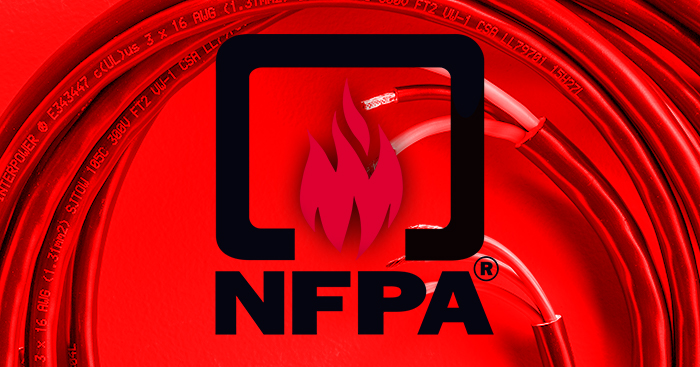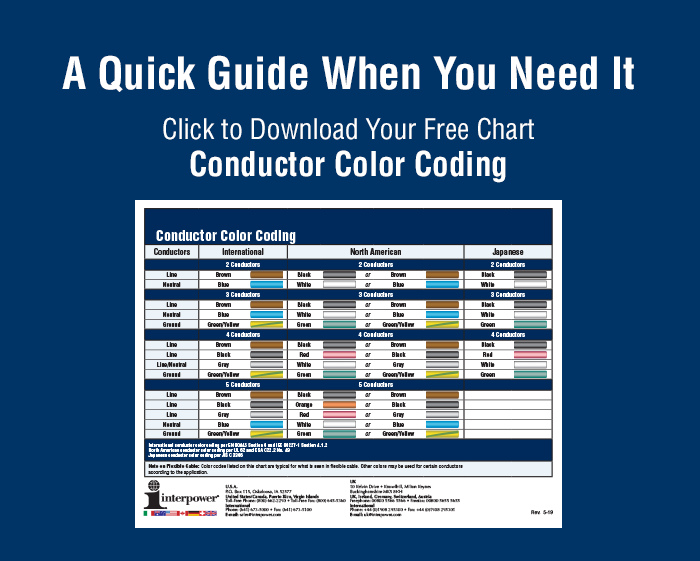Selecting Wire and Cable to Meet NFPA 79 Requirements—A Brief Overview
Posted on 11/4/19 8:00 AM

For those manufacturers who are unfamiliar with North American NFPA 79 requirements, simply finding out they need to meet these requirements for a product they are building or preparing to install can cause a considerable state of confusion. This is especially true for foreign manufacturers importing products into North America and for manufacturers venturing into this product field for the first time or who are installing new equipment from abroad.
It is important to know what NFPA 79 is, what types of equipment it affects, and what some of the basic requirements are in regards to wire and cable.
NFPA 79
NFPA stands for the National Fire Protection Association. The NFPA is the leading authority and advocate of fire safety and prevention, electrical safety, and building safety in North America, and is active in these areas worldwide. The NFPA develops, publishes, and releases consensus standards and codes for the purpose of minimizing the possibility and effects of fire, electrical shock, and other risks. One of their most recognizable works is the National Electrical Code (NEC) for the United States.
Types of Equipment Affected
NFPA 79 is the Electrical Standard for Industrial Machinery. This standard has officially been in place since 1965. The scope of the standard covers large and small, non-portable power tools such as bench grinders, drill presses, plastics processing machinery, and other power driven machines. The machines are typically seen as being used to process any materials by way of cutting; forming; applying pressure; applying electrical, thermal, or optical techniques; lamination; or any combination of these processes. It can also cover equipment used to transfer materials or tooling to assembly, inspection, or to packaging areas.
The standard gives requirements covering construction of the equipment, general operating conditions (voltage, frequency, impulses, etc.), safety requirements (emergency shut-offs and lock-out/tag-out), protection against electric shock, equipment protection circuits, grounding, and control circuit construction, among others.
Basic Requirements for NFPA 79
One area manufacturers must be aware of when building or connecting this type of equipment is wire and cable. NFPA 79 requires that wire and cable must only utilize copper conductors (no aluminum allowed) and that the temperature rating must be a minimum of 85°C. Additionally, AWM wire and cable types are not permitted, with the exception of when they are part of a UL listed (sub)assembly and have been found suitable for the application. Hook-up wire types that should be specified include MTW, THHN, THW, RHH, RHW, RHW-2, XHHW, and XHHW-2.
Flexible cord types allowed for use with power cords include rubber types S, SJ, SJOW, SOW; thermoplastic elastomer types SE, SEOW, SJEOW; and thermoplastic types SJT, SJTOW, SJTOOW, STO, and STOW, just to name a few. Many more types can be found listed in the standard.
Per NFPA 79, power cords are not to exceed 50 feet in length for these types of machines. This is likely due not only to large in-rush and steady state current levels and related heat rise issues associated with starting and running the machine and its motors, but to potential voltage drop issues along the length of the cord. Keeping the cord as short as possible will minimize voltage drop problems. Slightly over-sizing the cord (conductors) will also help with both issues. For instance, if the ampacity requirements necessitate the use of a 12AWG cable as the minimum, if possible, bumping up to a 10AWG size cable will provide less resistance and reduced heat rise, resulting in smaller voltage drops.
UL 1063 (Machine Tool Wires and Cables) is a supporting standard that can give additional guidance as to the characteristics of these types of wires. UL 62 is the flexible cable standard that can supply additional information regarding the flexible cable for the power cords. It is recommended to be familiar with these standards, to some extent, when choosing the correct wire and cable.
With these types of equipment, the exact application will dictate the wire or cable type chosen. For example, in applications where petroleum products will be used, like grease, oil, or some cleaning agents, oil resistant cable should be considered. If the application involves a process requiring water or some other liquids or if wash-downs of some type are required, water resistant cable is the best choice. If there are contaminants that could cause abrasion or other damage, then rubber might be specified over the thermoplastic types for additional resistance and durability.
NFPA Standard and the IEC 60204 Standard
While the European counterpart to this standard is IEC 60204, this should not be used as a replacement for the NFPA standard in North America. It is strongly advised to contact the National Fire Protection Association and purchase a copy for review in order to learn about and meet all the requirements that affect a specific electrical application.
Resource:
National Fire Protection Association (NFPA)
(800) 344-3555 (U.S.A./Canada)
(617) 770-3000
Topics: cable, electrical safety, NFPA 79





